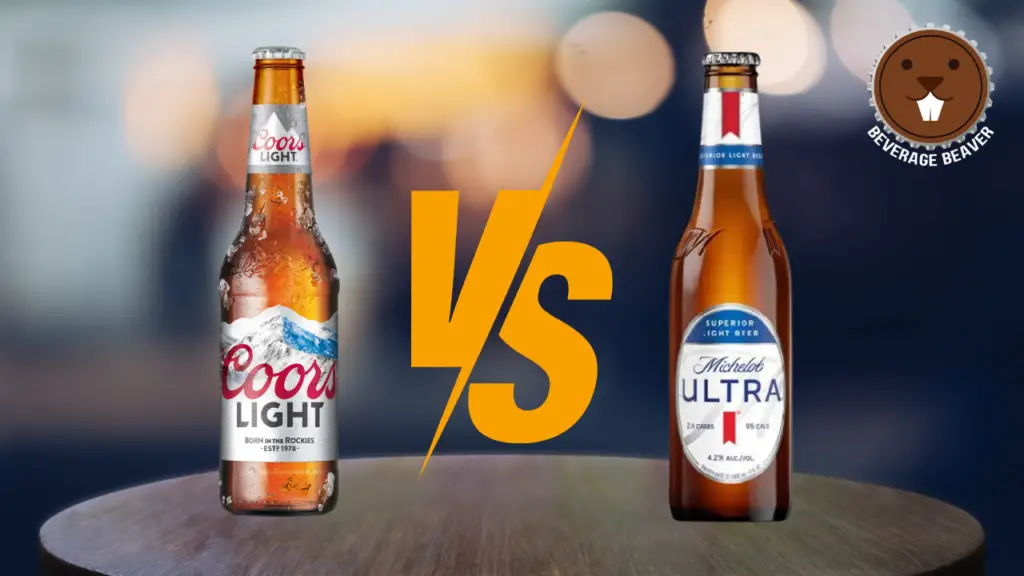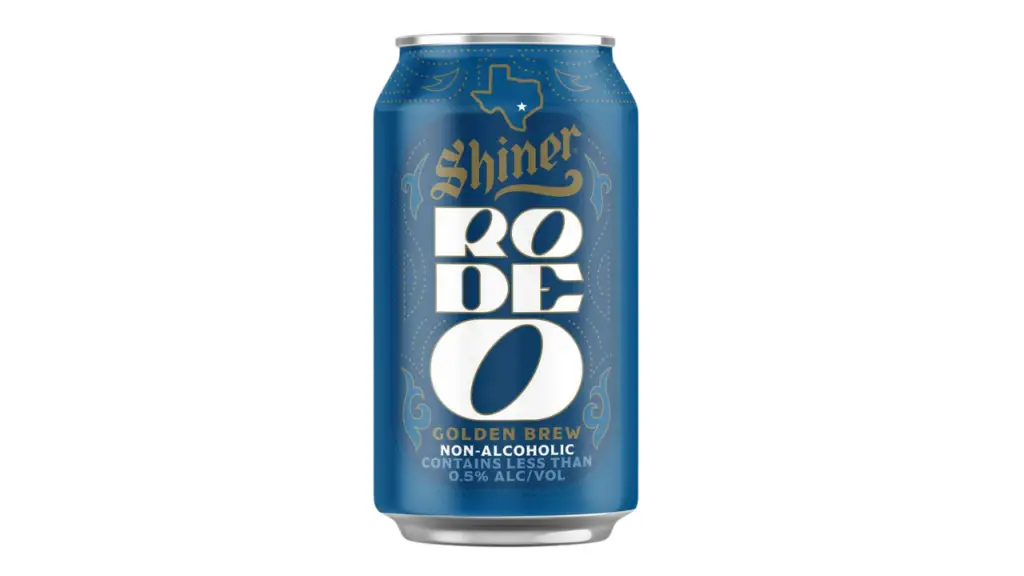Budweiser vs Heineken: Which Is The Better Beer?
Both Heineken and Budweiser are immensely popular lagers that have made their mark in history. They are sold worldwide and have a strong foothold in the American market. However, if given the choice, which beer tastes better? Let’s start with a quick comparison:
Budweiser, an American lager, has a subtle herbal-like taste. In contrast, Heineken, a European pale lager, presents a more pronounced herbal flavor. Budweiser is low in bitterness and carbonation due to its rice content, while Heineken exhibits medium bitterness and carbonation levels. Heineken is known for its strong kick and aftertaste, whereas Budweiser is smoother and more approachable.
But this is just the tip of the iceberg. Below, we’ll delve into various aspects of each beer to determine which generally tastes better. We’ll explore flavor, mouthfeel, calorie content, alcohol percentage, and aroma. Additionally, we’ll examine the appearance and brewing processes to highlight their respective strengths and weaknesses. By the end of this, you’ll have a comprehensive understanding of both. Read on!
Budweiser vs Heineken: Flavor
Let’s delve into the flavor profiles of both Budweiser and Heineken, where the differences between these two beers become immediately apparent.
Budweiser, an American lager, is distinct in its use of rice, a common ingredient in American lagers but rare in European lagers like Heineken. The rice imparts a soft flavor profile to Budweiser, making it exceptionally easy to drink and accessible even to those new to beer. Often described as ‘crisp’ due to the rice addition, Budweiser indeed has a clean, straightforward taste.
Additionally, Budweiser contains the typical barley malt and hops found in most lagers worldwide. This composition results in a low to medium malt flavor, though it is not overly pronounced. Notably, Budweiser is not characterized by bitterness; its taste is so mild that some might find it ‘watery’. Consequently, Budweiser’s aftertaste is fleeting, leaving no lingering bitterness or flavor.
In contrast, Heineken does not include rice, relying solely on malted barley and hops. This choice results in a notably more bitter beer, which can be a stark contrast for those accustomed to Budweiser’s milder taste. For those who prefer bitter beers, Heineken, representing European pale lagers, might be more appealing.
A significant difference between these beers is their aftertaste. Heineken features a pronounced, lingering bitterness that intensifies with each sip. This characteristic makes Heineken an excellent choice for those who enjoy the complexity and lasting impression of bitter beers.
Budweiser vs Heineken: Mouthfeel
The mouthfeel of Budweiser and Heineken distinctly sets them apart, embodying two different experiences in terms of texture and carbonation. Budweiser features significantly less carbonation compared to Heineken. This is evident when observing the two beers poured into glasses; Budweiser displays notably fewer bubbles than Heineken.
This lower level of carbonation in Budweiser contributes to its smoother, more drinkable quality, albeit at the expense of character. In contrast, Heineken, with its higher carbonation, is less smooth, making it less suitable for quick drinking or consuming in large quantities. However, this characteristic imbues Heineken with a more pronounced personality.
The ‘character’ in Heineken is defined by its combination of bitterness and carbonation, which together create a distinctive ‘kick’. This sensation is noticeable from the initial sip and persists through the act of swallowing. Heineken’s texture and taste fill the mouth, offering a robust experience. On the other hand, Budweiser lacks this impactful sensation due to its minimal bitterness and carbonation, resulting in a milder, more understated mouthfeel.
Budweiser vs Heineken: Smell
Regarding their aromas, neither Budweiser nor Heineken have particularly prominent scents. One must pay close attention to discern how their smells influence the overall taste experience. Upon careful observation, it becomes apparent that Heineken possesses a more herbal aroma and a slightly stronger scent than Budweiser.
Budweiser, in contrast, emits a faint herbal smell, almost to the point of being imperceptible. This subtlety in aroma aligns with the beer’s flavor profile, which is light and non-offensive. The aroma of Budweiser is a reflection of its taste – understated and approachable.
Budweiser vs Heineken: Calories
In today’s health-conscious world, the calorie content of beer, along with its distribution across various macronutrients, is an increasingly relevant consideration.
It’s interesting to note that Heineken and Budweiser have quite similar calorie counts and macronutrient profiles. This similarity isn’t surprising given that both are lagers with the same alcohol percentage.
Heineken, with a 5% alcohol content, contains 40 calories per 3.38 fl. oz. (100ml), while Budweiser, also at 5% alcohol, has a slightly higher count of 41 calories for the same volume. In terms of carbohydrates, both Heineken and Budweiser contain three grams per 3.38 fl. oz. However, there is a slight difference in protein content: Heineken offers 0.6 grams of protein per 3.38 fl. oz, compared to Budweiser’s 0.3 grams for the same amount.
Budweiser vs Heineken: Alcohol Content
The alcohol content of both Heineken and Budweiser varies across different regions of the world.
In the United States, both Heineken and Budweiser are sold with an Alcohol by Volume (ABV) of 5%. For Heineken, this consistency has been maintained since its introduction to the U.S. market. It was first imported immediately after Prohibition, becoming the first foreign beer available to American consumers. Since the beer had a 5% alcohol content in Europe, the same was offered in the U.S., and this has remained unchanged.
Budweiser’s history with alcohol content is a bit more varied. Created in 1876, early brewing documents indicate that the original recipe contained more fermentable sugars, resulting in an alcohol percentage of around 5.2%. Over time, this was adjusted to the standard 5%, although the exact timing of this change is unclear.
In the United Kingdom, the situation differs. Initially, Budweiser was brewed with an alcohol content of 4.8% for bottled or canned beer and 4.3% for draught. However, in 2017, these were standardized to an ABV of 4.5%.
Heineken’s approach in the UK has also evolved. In the 1970s, they introduced their beer with a 3.5% ABV, catering to the UK’s preference for lower-alcohol beers at the time. However, as UK consumers gradually adapted to higher ABV beers, Heineken shifted to their standard 5% ABV beer in the early 2000s.
Budweiser vs Heineken: Appearance
“Appearance The visual aspect plays a significant role in the overall beer-drinking experience. In this context, I believe Heineken excels in creating a more appealing appearance.
One notable difference is the packaging color: Budweiser uses a brown bottle, while Heineken opts for a green one. Many would agree that Heineken’s green bottle exudes a more premium feel compared to the brown bottle of Budweiser.
Additionally, the design elements of Heineken’s packaging contribute to its standout appearance. The Heineken logo, accompanied by the iconic red star, is strikingly more recognizable and clear than Budweiser’s packaging design. As a European, my exposure to Budweiser was limited, and upon first purchasing it, I was struck by the label’s cluttered appearance, filled with an abundance of text.
Heineken has positioned itself as a premium beer, and this is reflected in its packaging. Conversely, Budweiser markets itself as a quintessential American beer, which is precisely the impression conveyed by its packaging.
Budweiser vs Heineken: Breweing Process And Ingredients
The brewing processes and ingredients of Budweiser and Heineken highlight another key area of divergence between the two beers, as we’ve touched on earlier. In a previous section of this blog, we delved into the brewing process and ingredients of Budweiser in detail.
Budweiser’s unique recipe includes a mix of 30% four-row barley malt, 40% six-row malt, 30% rice, and purified water. The hop varieties used in Budweiser, primarily grown in the United States, include Hallertau, Saaz, and Tettnanger, which constitute about 70% of the hops in the beer. The remaining 30% are European hops and other varieties such as Willamette, which are high-alpha and non-Germanic.
Heineken, on the other hand, is crafted using just three ingredients: purified water, malted barley, and predominantly European hops, likely Czech Saaz hops. This recipe excludes rice entirely. Moreover, Heineken employs a simpler hop approach, using a specific hop species rather than a complex blend. Notably, Heineken uses hop concentrate, extracting only the oils from the hops, which contributes to the beer’s more pronounced bitter taste. This is a significant distinction between Heineken and Budweiser.
Both beers are bottom-fermented, meaning they use the same category of yeast (as opposed to top-fermenting yeast).
In summary, both Budweiser and Heineken are brewed with natural ingredients and are free from artificial flavors or colors, which is commendable. While they utilize the same type of yeast, the variance in other ingredients leads to distinctly different products, which is to be expected.
Budweiser vs Heineken: Brand Image
In this review, I also want to address the brand image of both Heineken and Budweiser, and the typical consumer profiles each brand attracts.
Heineken has consistently positioned itself as a premium beer. Globally, it’s recognized and marketed as such, contributing to its status as one of the most valuable beer brands. The success of Heineken’s brand image over the past decades is a testament to its strategic marketing.
Budweiser, in contrast, has embraced an ‘All American’ identity, targeting the mass market. This positioning has been both a strength and a challenge in the U.S., especially with the rise of craft beers. Instead of adapting to this craft beer trend, Budweiser has reinforced its straightforward, ‘no fuss’ image.
Despite not being the top-selling beer in the U.S., Budweiser remains the most valuable beer brand in the country, a notable achievement. Their mastery of the all-American beer niche continues to be effective.
However, Budweiser faces branding challenges in Europe due to the presence of a Czech beer also named Budweiser, which holds the trademark in continental Europe. As a result, Budweiser is often marketed as ‘Bud’ in most parts of the European Union, except in the United Kingdom and Spain.
In summary, while Heineken boasts a stronger global brand image as a premium beer, Budweiser is firmly rooted as an iconic American beer. Each appeals to different consumer segments, and in this diversity, there’s no clear ‘better’ or ‘worse’ option—just different appeals to different tastes and preferences.






















